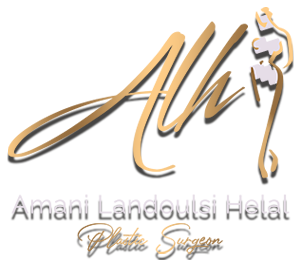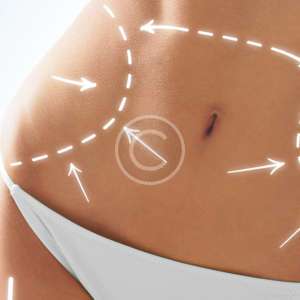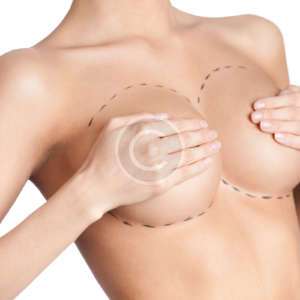
Breast augmentation, technically known as augmentation mammoplasty, is a surgical breast enlargement procedure. Breast augmentation and breast implant surgery are two names for what is essentially the same. These cosmetic surgeries involve placing silicone or saline implants into the breast in order to enhance size, shape and volume of breasts.
You are a Good Candidate for Breast Lifting if
- You are physically healthy and maintain a stable weight
- You do not smoke
- Your breasts have a flatter, elongated shape or are pendulous
- When unsupported, your nipples fall below the breast crease
- Your nipples and areolas point downward
- You have stretched skin and enlarged areolas
- One breast is lower than the other
Consultation
Consultation is the beginning of your journey to reclaiming your breasts, reversing the effects of pregnancy, weight fluctuations, genetics, and aging. Before you walk through the door, however, you should consider some of the topics that will be discussed and some of the information you should prepare ahead of time.
Be Ready to Discuss About:
- Your allergies, particularly any known reactions to drugs and current medications
- Your family history, including any breast cancer diagnoses.
- Your previous surgeries and how you healed
- Your breast health, which may require any records of previous mammograms and biopsies
- Your expectations for surgery, which should be realistic.
Procedure
Breast lifts are usually performed under anesthesia in a hospital where you can expect to stay one or two days. Mastopexy usually takes three to five hours depending on the technique used. The smaller procedure consists of just a circular incision around the areola, the excess skin within that circle is excised and the resulting wound is closed in a purse-string fashion. Depending on the case, a more extensive approach may be needed and this involves an anchor-shaped incision following the natural contour of the breast. When the excess skin has been removed, the nipple and areola are moved to a higher position. The skin surrounding the areola is brought down and together to reshape the breast. Stitches are usually located around the areola, in a vertical line extending downwards from the nipple area, and SOME TIME along the lower crease of the breast. AN ADDITIONAL IMPLANT OR FAT GRAFTING CAN BE DONE TO IMPR4OVEW THE RESULT OF BREast lift
Risks
Is it Safe?
A breast lift is normally safe. Nevertheless, as with any surgery, there is always a possibility of complications, bleeding, and infection, which, even if they take place, can be controlled.
Risks specific to breast lift surgery include:
- Bleeding or hematoma formation
- Breast asymmetry
- Breast contour and shape irregularities
- Changes in nipple or breast sensation, which may be temporary or permanent
- Deep vein thrombosis, cardiac and pulmonary complications
- Fatty tissue found deep in the skin might die (fat necrosis)
- Fluid accumulation
- Infection
- Poor healing of incisions
- Possibility of revisional surgery
Is it painful?
Whenever you have surgery, you will likely experience some discomfort associated with the procedure, and patients typically describe the discomfort associated with a breast lift as « moderate. » During your procedure, you will typically be under general anesthesia. Additionally, some of the surgeons perform a nerve block to give you excellent post-operative pain control. After the procedure, you will be prescribed pain medication that will keep your discomfort at a tolerable level.
Recovery
During your breast lift recovery, dressings or bandages will be applied to the incisions after the procedure is completed.
You’ll need to wear an elastic bandage or support bra to minimize swelling and support your breasts as they heal.
A small, thin tube may be temporarily placed under the skin to drain any excess blood or fluid that may collect. You can expect some numbness in your nipples and breasts, caused by the swelling after surgery. This numbness usually fades as the swelling subsides over the next six weeks or so. Don’t plan on returning to work for a week or 10 days and avoid lifting anything over your head for three to four weeks.
Results
After breast lift surgery, some of the results are quickly visible. Once post-surgical swelling goes down, patients can start enjoying their new look even more. The final results of a breast lift procedure typically take a few months as a woman’s new breasts settle into shape and position. Incision scars will fade over time, while the results from a breast lift procedure can be long-lasting.
The results from breast lift surgery are dependent on a few factors, such as genetics, age, and maintaining a healthy lifestyle. Here are some ways patients can help prolong their breast lift results:
- Avoid fluctuating weight, which can negatively impact breast lift results
- Take into consideration that pregnancy and breastfeeding can alter breast lift results
- Avoid prolonged sun exposure to promote healthy skin and improve elasticity
- Limit high-impact exercise, which can increase the effects of gravity and cause breast sag
- Give your newly lifted breasts proper bra support to help reduce any sagging
Things to keep in mind
How long breast lifting will last ?
The short answer is « it depends. » For some, they experience long-lasting results, while others may want minor revisions only after a few years. To say how long results last from a typical breast lift surgery is dependent upon many factors such as age, genetics, health and dietary habits, as well as surgical techniques.







